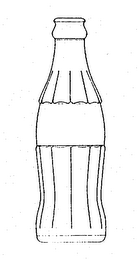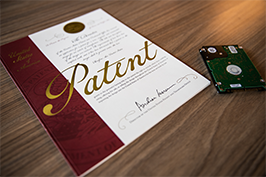What Is Trade Dress Protection And How Can It Protect My Product?
Trade dress is a legal term that is used to describe the “total image and overall appearance” of a product design or product packaging. In certain cases, a business or individual may use trademark law to prevent others from using similar product design trade dress or product packaging trade dress. This article discusses what types of product design and packaging are entitled to trade dress protection.
Similar to a trademark, a product’s design or packaging may be entitled to protection under the Lanham Trademark Act, 15 U.S.C. § 1025. Trade dress originally included only the packaging or “dressing” of a product. However, trade dress protection now also includes the design of the product itself. Trade dress is usually defined as the “total image and overall appearance” of a product design or packaging and may include features such as size, shape, color combinations, texture and graphics. Two Pesos, Inc. v. Taco Cabana, Inc., 505 U.S. 763, 764 n.1 (1992).
Product packaging trade dress is only protectable if it is inherently distinctive or has acquired distinctiveness through secondary meaning. Inherently distinctive is a term that means that the product itself is capable of identifying products or services as coming from a specific source. One test for determining if trade dress is inherently distinctive is the following:
1) whether it is a “common” basic shape or design;
2) whether it is unique or unusual in a particular field; AND,
3) whether it is a mere refinement of a commonly-adopted and well-known form of ornamentation for a particular class of goods viewed by the public as a dress or ornamentation for the goods.”
AmBrit, Inc. v. Kraft, Inc., 812 F.2d 1531, 1536 (11th Cir. 1986).
One example of inherently distinctive product packaging trade dress is the packaging of the Klondike ice cream bar (pictured below). The Klondike ice cream bar has a square size, bright coloring, pebbled texture, polar bear and sunburst images, and style of printing that courts have found give the product packaging a very distinctive visual impression.
On the other hand, if the product packaging is not inherently distinctive, then product packaging may be entitled to protection under the Lanham Act if the product packaging has acquired distinctiveness through secondary meaning. Secondary meaning is a term that refers to the connection in the consumer’s mind between the mark and the product’s producer, whether that producer is known or unknown. The kind and amount of evidence necessary to establish that product packaging has acquired distinctiveness depends on the nature of the trade dress and the circumstances surrounding the use of the mark in each case. Secondary meaning for proving that product packaging is entitled to protection under the Lanham may be proved by long term use, advertising expenditures, commercial impression created by the advertising, survey evidence, market research and consumer reaction studies. Yankee Candle Co. v. Bridgewater Candle Co., 259 F.3d 25, 43 (1st Cir. 2001).
Product design is only entitled to protection under the Lanham Act if the product design has acquired distinctiveness through secondary meaning. Wal-Mart Stores, Inc. v. Samara Bros., 529 U.S. at 213-216 (2000). Product design is not inherently distinctive. Id. at 212. Similar to product packaging, secondary meaning for product design may be proved through long term use, advertising expenditures, commercial impression created by the advertising, survey evidence, market research and consumer reaction studies. One example of product design trade dress is the Coca-Cola bottle, which has been registered as US Trademark Registration No. 1,057,884. The curved ribbed shaped design of the Coca-Cola bottle is illustrated below.

A major limitation for both product design trade dress and product packaging trade dress is the doctrine of functionality. In general terms, if trade dress is functional it cannot serve as a trademark. Trade dress is functional if a feature of that trade dress is “essential to the use or purpose of the article or if it affects the cost or quality of the article.” Qualitex Co. v. Jacobson Prods. Co., 514 U.S. 159, 165 (1995). A determination of functionality normally involves consideration of one or more of the following factors, commonly known as the “Morton-Norwich factors”:
(1) the existence of a utility patent that discloses the utilitarian advantages of the design sought to be registered;
(2) advertising by the applicant that touts the utilitarian advantages of the design;
(3) facts pertaining to the availability of alternative designs; and
(4) facts pertaining to whether the design results from a comparatively simple or inexpensive method of manufacture.
In re Becton, Dickinson & Co., 675 F.3d 1368, 1374-75 (Fed. Cir. 2012); In re Morton-Norwich Prods., Inc., 671 F.2d 1332, 1340-1341. Turning to coke bottle design trade dress, the curved ribbed shaped design would not be functional given that the curved ribbed shape is not essential to the purpose of the bottle – storing liquid.
Trade dress may be a critical asset to a business’s intellectual property portfolio. You should seek the advice of an experienced trademark attorney if you have questions about whether your product design or product packaging would be entitled to trade dress protection. The attorneys at The Plus IP Firm frequently advise on, acquire and enforce trade dress for product packaging and product design so that businesses may profit from their unique innovations and creations. To learn more about the author of this article, Derek Fahey, click HERE.












